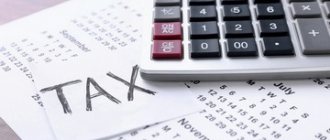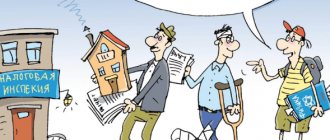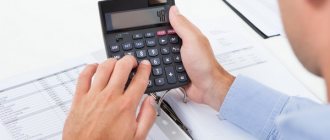How to get a tax deduction for medicines and get 13% back for pills and other medications purchased at a pharmacy? What is needed to receive a personal income tax refund, that is, to get money back from the tax office?
It is possible to return part of the funds spent on treatment for several years. Previously, the tax deduction for medicines was part of the social deduction along with the refund of funds for medical services: both ordinary treatment and expensive ones.
Until 2021, the social deduction for medicines was provided only for a limited list of drugs, and therefore it was not easy to obtain compensation for medicines. Now, as of June 17, 2021, Federal Law No. 147 provides that money can be returned for any medicines. Let's look at the new rules and decide on the documents that will need to be submitted to the Federal Tax Service to return the money.
Is there a tax deduction for medicines?
Taxpayers have the right to reimbursement of expenses for the purchase of medicines prescribed by a doctor in the form of a social tax deduction.
This means that the amount of a citizen’s income spent on medicines is exempt from taxation at a rate of 13%. In monetary terms, the taxpayer will receive 13% of the cost of purchased drugs.
The legal limit for the social tax deduction is 120,000 rubles. This is the maximum cost incurred by which you can reduce your annual taxable income.
If the taxpayer’s annual earnings are less than 120,000 rubles, then the amount of the benefit will be limited to the amount of annual earnings.
You can receive a social deduction only for those medications that are included in the list of medications approved by law.
Examples of START calculations
Let's look at the procedure for calculating deductions using a specific example.
Krasnov M. M. earns 30,000 rubles. per month. During the year, his employer transferred 46,800 rubles to the budget. Personal income tax (RUB 30,000 * 12 months * 13%).
In the same year, Krasnov M.M. purchased, at his own expense, the drug “Interferon beta” for his mother, prescribed to her by her attending physician, in the amount of 32,000 rubles.
This medicine is contained in the List of Medicines, the cost of which is taken into account when determining the amount of START.
Krasnov M. M. has the right to claim a deduction of 4,160 rubles. (RUB 32,000 * 13%).
Requirements for receiving benefits when purchasing medicines
Who can apply for a tax deduction
A tax deduction for the purchase of medicines can be received by any citizen who has income taxed at a tax rate of 13% and has incurred actual costs for the purchase of medicines.
Benefits can be obtained both for the purchase of medicines for yourself and for your spouse, minor relatives or adopted children or parents.
Reasons for receiving
Expenses for medicines must be justified, i.e. medications must be purchased based on a doctor's prescription and with the taxpayer's personal funds.
If the medicines were purchased by another person, for example, an employer, then these amounts will not be reimbursed, because The taxpayer himself does not bear the actual expenses.
But if a citizen reimburses the employer for the purchase of medicines for him by deducting from wages or depositing cash in the cash register of the enterprise, in this case a deduction for personal income tax will be provided.
Law
The list of medications, the costs of which can be reimbursed in the form of a social deduction, was approved by Decree of the Government of the Russian Federation of March 19, 2001 No. 201.
This list contains international nonproprietary names of drugs; in a pharmacy, drugs of the same composition and action may differ in name.
A tax deduction will be provided for those medicines that contain the medicines specified in the List, regardless of their trade names (letter of the Ministry of Finance of Russia dated June 19, 2015 No. 03-04-07/35549).
What expenses can be deducted for treatment?
The list of expenses that are eligible for reimbursement through an income tax refund includes:
- Treatment costs (inpatient or outpatient).
- Expenses for medications prescribed during treatment.
- Costs of insurance premiums when applying for a voluntary health insurance policy.
But even in these categories, not all expenses can be returned. Tax legislation allows you to apply for a deduction if your money is spent on:
1 Dental treatment
This category includes not only the actual installation of fillings and the treatment of caries or pulpitis. Here is a list of dental services for which personal income tax will be returned to you:
- Diagnosis and treatment for emergency indications (flux, acute pain, etc.).
- Routine diagnostics and preventive procedures.
- Rehabilitation procedures (physiotherapy).
- Prosthetics with installation of dentures and implants.
- Surgical treatment of dental abnormalities or tumors.
- Dental restoration.
Note! Aesthetic dentistry (replacing healthy teeth, whitening, etc.) is not included in the list of services after which a personal income tax refund is possible!
From the point of view of the refunded amount, there is one caveat. Based on the recommendations of the Federal Tax Service of the Russian Federation No. 04-2-05/7 dated December 25, 2006, dental services are not considered expensive treatment, therefore the maximum deduction cannot exceed 120,000 rubles (and, accordingly, 15,600 rubles will be returned to you). But there is one exception: implantation (see clause 9 of the List of expensive types of treatment in Russian Government Decree No. 201 of March 19, 2001). In this case, you will receive a deduction for the entire amount spent on the procedure.
Example
Citizen of the Russian Federation V.V. Petrov in 2021, I had prosthetics done on my lower jaw teeth at the Dent dental clinic for 118,000 rubles. Over the course of the year, Petrov’s employer transferred 11,100 personal income tax rubles to the budget for him. 13% of the 118,000 rubles Petrov spent on treatment is 15,340, which is less than the maximum possible 15,600 rubles. However, Petrov can only count on 11,100 rubles, since the taxpayer cannot return more money than he paid to the budget. The balance of 4,240 rubles “burns out”, since social tax deductions are not carried over to the next year.
2 Treatment in a hospital/clinic
The list of specific services is contained in Decree of the Government of the Russian Federation No. 201 of March 19, 2001. It includes all diagnostic, treatment, prevention and medical rehabilitation services across the chain of medical institutions, from ambulances to dispensaries. This also includes medical examination services.
But a personal income tax refund will only be possible if several requirements are met. All of these medical institutions must have a state license, be located on the territory of the Russian Federation and maintain “transparent” accounting.
For each service provided, an agreement must be concluded, and payment must be confirmed by certificates and receipts received from the medical institution.
Example
In 2021, a resident of Kostroma M. underwent a paid course of treatment for a sexually transmitted disease at a dermatovenerological dispensary. The cost of the course, which included a comprehensive diagnostic study, medical procedures and follow-up, was 33,000 rubles. In 2021, M. paid 28,000 rubles in personal income tax. Therefore, she will receive a tax refund in full of the issued tax deduction: 33,000 * 13% = 4,290 rubles.
3 Sanatorium-resort treatment
Article 219 of the Tax Code tells us that you can get a tax deduction both for medical care that is included in the price of a tour package (for example, to a sanatorium), and for that paid on the spot in cash.
As in the above cases, a medical institution must have Russian registration, a license from the Ministry of Health of the Russian Federation and be located within the borders of the Russian Federation. Therefore, say, treatment in Abkhaz health resorts, alas, does not allow you to count on a deduction.
Secondly, to apply for a tax benefit, you must provide a complete package of documents:
- a certificate from the sanatorium/boarding house, which indicates the amount of expenses for medical procedures, allocated from the total cost of the voucher;
- checks, receipts or other payment documents confirming expenses, and such confirmations must be for both services included in the price of the trip and for additionally purchased services;
- agreement with a medical and recreational institution;
- a copy of the license of the sanatorium or boarding house.
You should take care of obtaining documents at the stage of purchasing a voucher. If you buy it from a travel agency, check who should provide the contract with the sanatorium, as well as a copy of the license (so that after returning you don’t have to run around looking for who has these documents). It is important whether the contract with the travel agency stipulates the cost of the travel components - food/accommodation/treatment. If only the total amount is indicated, the deduction will not be provided until you specify how much of the money went to treatment. Checks and receipts for additional medical services (and often for basic ones) are issued on the spot, in the sanatorium itself.
Note! If the voucher was provided to you by a trade union or employer, you can receive a deduction only in the amount of expenses incurred by you (usually 10-25% of the cost of the voucher).
Example
Citizen K. decided to undergo a course of sanatorium-resort treatment prescribed by a doctor, independently choosing a sanatorium to which he went every summer for many years. Having paid 41,000 rubles for the trip, K. took the course in the summer of 2021 and began to apply for a deduction in 2020. Having requested a copy of the sanatorium’s license, K. learned that the license for the provision of medical services of the institution expired in May 2019, a new license had not yet been received at the time of the citizen’s stay in the sanatorium (deficiencies in the application were being corrected). The tax office refused to issue K. a tax deduction.
4 Payment for medicines
You can receive a tax deduction only for the purchase of drugs and medicines that are present in the already mentioned Russian Government Decree No. 201 of March 19, 2001. This document contains international names of drugs, but you can also buy patented drugs that are analogues of medications from the list. Please note that personal income tax will be refunded only for the purchase of medicines registered in the register of the Ministry of Health (grls.rosminzdrav.ru).
In addition to standard documents for social deductions, in order to return personal income tax for the purchase of medicines, you must submit:
- Recipes on forms in form N 107/у, in which a note is made that they were written out for submission to the tax office. A maximum of two medications can be prescribed on one such form. The names of medications must be written in Latin. The procedure for issuing prescriptions is specified in the order of the Ministry of Health dated December 20, 2012 No. 1175n. No erasures are allowed on the forms. The recipe can be written out either by hand (in legible handwriting!) or on the computer.
- Cash receipts or receipts for payment for medicines.
Example
In 2021, Muscovite N. suffered from bronchitis, was treated on an outpatient basis, purchased drugs prescribed by a doctor: Sumamed (3,900 rubles/course), Ventolin (750 rubles/course), Acyclovir Akrikhin (1,035 rubles/course), Fenkarol (1150 rubles/course). N.’s income in the reporting year amounted to 540,000 rubles, and personal income tax was paid on him in the amount of 70,200 rubles. The Muscovite wrote an application for a refund of 13% of 6835 rubles. (3900 + 750 + 1035 + 1150). However, the tax inspectorate excluded the drug “Ventolin” from the scope of the tax deduction, the active substance of which is not included in the list approved by Decree of the Government of the Russian Federation of March 19, 2001 N 201. As a result, the amount of personal income tax refund for the purchase of medicines amounted to 6135 * 13% = 797, 5 rub.
List of medicines to apply for deduction
Anesthetics and muscle relaxants
Anesthesia:
- Halothane (solution for inhalation anesthesia in vials)
- Hexobarbital (powder for injection)
- Dinitrogen oxide (gas in cylinders)
- Ketamine (injection solution)
- Sodium oxybate (injection solution)
- Sodium thiopental (lyophilized powder for injection)
- Diethyl ether (liquid in bottles)
Local anesthetics:
- Bupivacaine (injection)
- Lidocaine (aerosol, solution for injection, gel, solution in capsules, eye drops)
Muscle relaxants:
- Atracurium besilate (injection solution)
- Botulinum toxin, albumin (lyophilized powder for injection)
- Vecuronium bromide (powder for injection)
- Pipecuronium bromide (powder for injection)
- Suxamethonium bromide (powder)
Analgesics, non-steroidal
Narcotic analgesics:
- Morphine (injection solution, tablets)
- Morphine + narcotine + papaverine + codeine + thebaine (injection solution)
- Pentazocine (injection solution, tablets)
- Piritramide (injection solution)
- Trimeperidine hydrochloride (injection solution, tablets)
- Fentanyl (injection solution)
Non-narcotic analgesics and non-steroidal anti-inflammatory drugs:
- Acetylsalicylic acid (tablets)
- Diclofenac sodium (tablets, dragees, injection solution, suppositories, gel, eye drops)
- Ibuprofen (capsules, tablets, syrup, cream)
- Ketoprofen (tablets, capsules, suppositories, gel, powder for solution)
- Lornoxicam (tablets, lyophilized powder for injection solution)
- Meloxicam (tablets, suppositories)
- Nalbuphine (solution for injection)
- Tramadol (injection solution, capsules, tablets, oral drops, suppositories)
- Allopurinol (tablets) as a treatment for gout.
Other means:
- Colchicine (tablets, dragees)
- Penicillamine (tablets, capsules, dragees)
Medicines used to treat allergic reactions
Antihistamines:
- Quifenadine (tablets)
- Ketotifen (tablets, capsules, syrup)
- Chloropyramine (tablets, solution for injection)
Drugs affecting the central nervous system
Anticonvulsants:
- Valproic acid (tablets, capsules, syrup, dragees, suspension, drops)
- Carbamazepine (tablets)
- Clonazepam (tablets, drops, injection solution)
- Lamotrigine (tablets)
- Phenytoin (tablets)
- Phenobarbital (tablets, oral solution)
- Ethosuximide (capsules)
Drugs for the treatment of parkinsonism:
- Amantadine (tablets, solution for injection)
- Biperiden (tablets, solution for injection)
- Levodopa + benserazide (capsules)
- Levodopa + carbidopa (tablets)
- Trihexyphenidyl (tablets)
Sedatives and anxiolytics, drugs for the treatment of psychotic disorders:
- Haloperidol (tablets, solution for injection)
- Diazepam (tablets, injection solution, suppositories)
- Zuclopenthixol (tablets, solution for injection)
- Clozapine (tablets, injection solution)
- Levomepromazine (tablets, solution for injection)
- Lorazepam (tablets)
- Medazepam (tablets, granules, capsules)
- Nitrazepam (tablets)
- Periciazine (drops, capsules)
- Perphenazine (tablets)
- Pipothiazine (solution for injection, drops)
- Sulpiride (tablets, injection solution, capsules, oral solution)
- Thioproperazine (tablets, solution for injection)
- Thioridazine (tablets, dragees)
- Trifluoperazine (tablets, solution for injection)
- Phenazepam (tablets, solution for injection)
- Fluspirilene (solution for injection)
- Fluphenazine (solution for injection)
- Chlorpromazine (tablets, injection solution, dragees)
- Chlorprothixene (tablets)
Interesting information: Social tax deduction for personal income tax. Types and how to get
Antidepressants and mood stabilizers:
- Amitriptyline (tablets, injection solution, dragees)
- Imipramine (tablets, dragees, solution for injection)
- Clomipramine (tablets, dragees, solution for injection)
- Lithium carbonate (tablets, capsules)
- Maprotiline (tablets, dragees, solution for injection)
- Mianserin (tablets)
- Moclobemide (tablets)
- Sertraline (tablets)
- Tianeptine (tablets)
- Fluoxetine (tablets, capsules)
- Citalopram (tablets)
Medicines for the treatment of sleep disorders: Zolpidem in tablet form.
Medicines for the treatment of multiple sclerosis:
- Glatiramer acetate (lyophilized powder for injection)
- Interferon beta (lyophilized powder for injection)
Means for the treatment of alcoholism and drug addiction:
- Naloxone (injection solution)
- Naltrexone (tablets, capsules)
Anticholinesterase drugs:
- Distigmine bromide (tablets, solution for injection)
- Neostigmine methyl sulfate (tablets, solution for injection)
- Pyridostigmine bromide (tablets, dragees, solution for injection)
Other drugs affecting the central nervous system:
- Vinpocetine (tablets, solution for injection)
- Hexobendine + etamivan + etophylline (tablets, solution for injection)
- Nimodipine (tablets, solution for infusion)
Means for the prevention and treatment of infections
Antibacterial:
- Azithromycin (tablets, powder, syrup)
- Amikacin (powder for injection, solution for injection)
- Amoxicillin + clavulanic acid (solution for injection)
- Ampicillin (tablets, capsules, powder for injection)
- Benzathine benzylpenicillin (powder for injection)
- Benzylpenicillin (powder for injection)
- Vancomycin (powder for injection)
- Gentamicin (ointment, cream, injection solution, eye drops)
- Josamycin (tablets, suspension)
- Doxycycline (tablets, capsules, powder for injection)
- Imipenem (powder for injection)
- Carbenicillin (powder for injection)
- Clarithromycin (tablets)
- Co-trimoxazole (tablets, suspension, solution for injection)
- Lincomycin (capsules, ointment, solution for injection)
- Meropenem (powder for injection)
- Mesalazine (suspension)
- Mupirocide (ointment)
- Norfloxacin (tablets, eye drops)
- Pefloxacin (tablets, solution for injection)
- Spiramycin (tablets, granules for suspension)
- Sulfacetamide (eye drops)
- Chloramphenicol (tablets, capsules, powder for injection, eye drops)
- Cefaclor (capsules, granules, syrup, suspension)
- Cefaperazone (powder for injection)
- Cefipime (powder for injection)
- Cefotaxime (powder for injection)
- Ceftazidime (powder for injection)
- Ceftriaxone (powder for injection)
- Cefuroxime (powder for injection)
- Ciprofloxacin (tablets, injection solution, eye drops)
- Erythromycin (tablets, ointment, syrup, ampoules)
Anti-tuberculosis drugs:
- Isoniazid (tablets, solution for injection)
- Lomefloxacin (tablets)
- Pyrazinamide (tablets)
- Prothionamide (tablets)
- Rifabutin (capsules)
- Rifampin (capsules, powder for injection)
- Streptomycin (powder for injection)
- Ethambutol (tablets, dragees)
- Ethionamide (dragée)
Antiviral agents:
- Acyclovir (tablets, ointment, cream, powder for injection)
- Ganciclovir (capsules, powder for injection)
- Didanosine (tablets, powder for oral solution)
- Zidovudine (capsules, syrup, solution for injection)
- Indinavir (capsules)
- Ifavirenz (capsules)
- Lamivudine (tablets, solution for internal use)
- Nevirapine (tablets, suspension)
- Stavudine (capsules, powder for oral solution)
Antifungal agents:
- Amphotericin B (ointment, powder for injection)
- Amphotericin B + methylglucamine (tablets)
- Griseofulvin (tablets, liniment, suspension)
- Itraconazole (capsules)
- Clotrimazole (vaginal tablets, cream, aerosol, solution)
- Terbinafine (tablets, cream)
- Fluconazole (capsules, solution for injection)
Antiprotozoal and antimalarial drugs:
- Hydroxychloroquine (tablets)
- Metronidazole (tablets, injection solution, suppositories)
- Chloroquine (tablets, injection solution)
- Bifidumbacterin in the form of tablets and powders for the preparation of suspension.
Vaccines and serums:
- Immunobiological preparations (for the diagnosis and prevention of infectious diseases in accordance with the epidemiological situation in the constituent entities of the Russian Federation)
- AIDS diagnostic system test
Antineoplastic, immunosuppressive and related drugs
Cytostatic agents:
- Azathioprine (tablets)
- Aranose (powder for injection)
- Asparaginase (powder for injection)
- Bleomycin (powder for injection)
- Busulfan (tablets)
- Vinblastine (lyophilized powder for injection)
- Vincristine (lyophilized powder for injection, solution for injection)
- Vinorelbine (solution for injection)
- Gemcitabine (lyophilized powder for injection)
- Hydroxyurea (capsules)
- Dacarbazine (powder for injection)
- Dactinomycin (powder for injection, solution for injection)
- Daunorubicin (powder for injection)
- Doxorubicin (powder for injection)
- Docetaxel (concentrate for injection solution)
- Idarubicin (capsules, lyophilized powder for injection)
- Irinotecan (solution for infusion)
- Ifosfamide (powder for injection)
- Calcium folinate (solution for injection)
- Carboplatin (powder for injection, solution for injection)
- Carmustine (lyophilized powder)
- Clodronic acid (capsules, concentrate for the preparation of infusion solution)
- Melphalan (tablets, powder for injection)
- Mercaptopurine (tablets)
- Methotrexate (tablets, powder for injection, solution for injection)
- Mitoxantrone (solution for injection, concentrate for infusion)
- Mitomycin (powder for injection)
- Oxaliplatin (powder for the preparation of infusion solution)
- Paclitaxel (solution for injection, concentrate for infusion)
- Procarbazine (capsules)
- Prospidia chloride (lyophilized powder, ointment)
- Thioguanine (tablets)
- Thiotepa (lyophilized powder for injection)
- Tretinoin (capsules)
- Fludarabine (powder for injection)
- Fluorouracil (solution for injection, concentrate for infusion)
- Chlorambucil (tablets)
- Cyclophosphamide (tablets, dragees, solution for injection)
- Cisplatin (lyophilized powder for injection, solution for injection)
- Cytarabine (powder for injection, solution for injection)
- Epirubicin (lyophilized powder for injection)
- Etoposide (solution for injection)
Hormones and antihormones:
- Aminoglutethimide (tablets)
- Anastrozole (tablets)
- Ganirelix (solution for injection)
- Goserelin (depot capsules)
- Medroxyprogesterone (tablets, granules, injection suspensions)
- Tamoxifen (tablets)
- Triptorelin (injection solution, lyophilized powder for injection solution)
- Flutamide (tablets)
- Cetrorelix (lyophilized powder for injection solution)
Related products:
- Interferon alpha (powder for injection, solution for injection, suppositories)
- Lenograstim (lyophilized powder for injection)
- Molgramostim (lyophilized powder for injection)
- Ondansetrion (tablets, solution for injection)
- Filgrastim (solution for injection)
Drugs for the treatment of osteoporosis
Stimulators of osteoformation:
- Alendronic acid (tablets)
- Alfacalcidol (capsules)
- Calcitonin (powder for injection)
- Calcium carbonate + ergocalciferol (tablets)
Drugs affecting blood
Antianemic drugs:
- Iron hydroxide sucrose complex (solution for injection)
- Ferrous sulfate (tablets, dragees)
- Iron sulfate + ascorbic acid (tablets)
- Folic acid (tablets)
- Cyanocobalamin (injection solution)
- Epoetin beta (solution for injection)
Drugs affecting the blood coagulation system:
- Alpostadil (powder for solution for injection)
- Alteplase (lyophilized powder for injection)
- Heparin sodium (solution for injection)
- Nadroparin calcium (syringes with solution for injection)
- Pentoxifylline (tablets, solution for injection)
- Protamine sulfate (solution for injection)
- Streptokinase (powder for injection)
- Ticlopidine (tablets)
- Phenindione (tablets)
- Enoxaparin sodium (syringes with solution for injection)
Solutions and plasma substitutes:
- Amino acids for parenteral nutrition (parenteral nutrition solution)
- Hemin (concentrate for the preparation of infusion solution)
- Dextrose (solution for injection, solution for infusion)
- Pentastarch (solution for infusion)
Plasma preparations:
- Albumin (solution for infusion)
- Coagulation Factor VIII (powder for injection)
- Clotting factor IX (powder for injection)
Lipid-lowering drugs:
- Simvastatin (tablets)
- Phospholipids + pyridoxine + nicotinic acid + adenosine monophosphate (solution for injection)
Drugs affecting the cardiovascular system
Antianginal agents:
- Isosorbide dinitrate (tablets, capsules, injection solution, aerosol)
- Isosorbide mononitrate (tablets, capsules)
- Nitroglycerin (tablets, capsules, patch, solution for injection)
Interesting information: How to get a tax deduction when buying an apartment
Antiarrhythmic drugs:
- Allapinin (tablets, solution for injection)
- Amiodarone (tablets, solution for injection)
- Atenolol (tablets)
- Metoprolol (tablets)
- Procainamide (tablets, solution for injection)
- Propafenone (tablets)
- Quinidine (tablets)
- Ethacizin (tablets)
Antihypertensive drugs:
- Azamethonium bromide (injection solution)
- Amlodipine (tablets)
- Betaxolol (tablets, eye drops)
- Verapamil (tablets, capsules, dragees, solution for injection)
- Doxazosin (tablets)
- Methyldopa (tablets)
- Nifedipine (tablets, capsules)
- Propranolol (tablets, solution for injection)
- Fosinopril (tablets)
Medicines for the treatment of heart failure:
- Valsartan (tablets)
- Digoxin (tablets, drops, solution for injection)
- Irbesartan (tablets)
- Captopril (tablets)
- Quinapril (tablets)
- Perindopril (tablets)
- Enalapril (tablets, solution for injection)
Vasopressors:
- Dobutamine (lyophilized powder for injection, concentrate for infusion)
- Dopamine (solution for injection, concentrate for infusion)
- Phenylephrine (injection solution, eye drops)
- Ephedrine (injection solution)
Diagnostic tools
X-ray contrast agents:
- Sodium amidotrizoate (solution for injection)
- Barium sulfate + sodium citrate + sorbitol + antifomsilan + nipagin (powder)
- Gadodiamide (injection solution)
- Gadopentetic acid (injection solution)
- Galactose (granules for injection solution)
- Iohexol (solution for injection)
- Iopromide (injection solution)
Fluorescent agents: Sodium fluorescein in the form of a solution for injection.
Radioisotope agents:
- Albumin microspheres, 99mTs (reagent for preparation, lyophilized powder for solution preparation)
- Bromezide, 99Tc (reagent for preparation, lyophilized powder for solution preparation)
- Pentatekh, 99mTs (reagent for preparation, lyophilized powder for solution preparation)
- Pirfotech, 99mTs (reagent for preparation, lyophilized powder for preparing solution)
- Strontium 89 chloride isotonic solution (solution for injection)
- Technefit, 99Ts (reagent for preparation, lyophilized powder for preparing solution)
- Technefor, 99mTs (reagent for preparation, lyophilized powder for solution preparation)
Antiseptics and disinfectants
Antiseptics: Iodine (alcohol solution)
Disinfectants:
- Hydrogen peroxide (solution)
- Chlorhexidine (solution)
- Ethanol (solution)
Drugs for the treatment of diseases of the gastrointestinal tract
Antacids and other antiulcer drugs:
- Omeprazole (capsules)
- Pirenzepine (tablets, solution for injection)
- Famotidine (tablets, solution for injection)
Antispasmodics:
- Atropine (eye drops, solution for injection)
- Drotaverine (tablets, solution for injection)
- Platyfillin (solution for injection)
Pancreatic enzymes: Pancreatin in the form of tablets, capsules or dragees.
Medicines for the treatment of liver failure:
- Artichoke leaf extract (tablets, syrup, injection solution)
- Lactulose (syrup)
Antienzymes: Aprotinin in the form of lyophilized powder and solution for injection.
Hormones and agents affecting the endocrine system
Non-sex hormones, synthetic substances and antihormones:
- Betamethasone (tablets, ointment, cream, drops, solution for injection)
- Bromocriptine (tablets, capsules)
- Hydrocortisone (lyophilized powder for injection, solution for intravenous injection, ointment, lotion)
- Chorionic gonadotropin (powder for injection)
- Desoxycortone (tablets)
- Dexamethasone (tablets, eye drops, injection solution)
- Desmopressin (solution for injection, drops)
- Dihydrotachysterol (capsules, powder for injection solution, drops)
- Clomiphene (tablets)
- Levothyroxine sodium (tablets)
- Levothyroxine + potassium iodide (tablets)
- Liothyronine + levothyroxine + potassium iodide + sodium propyloxybenzoate (tablets)
- Lutropin alfa (lyophilized powder for injection solution)
- Menotropins (powder for solution)
- Methylprednisolone (tablets, powder, ointment, suspension for injection, solution for injection)
- Nandrolone (oil solution for injection)
- Octreotide (injection solution)
- Prednisolone (tablets, powder for injection, ointment, eye drops, solution for injection)
- Somatropin (powder for injection)
- Tetracosactide (injection suspension)
- Thiamazole (tablets)
- Triamcinolone (ointment, tablets, injection suspension)
- Fludrocortisone (tablets, eye ointment)
- Follitropin alfa (lyophilized powder for injection solution)
- Follitropin beta (solution for injection, lyophilized powder for the preparation of injection solution)
- Choriogonadotropin alfa (lyophilized powder for injection solution)
- Cyproterone (tablets, oil solution for injection)
Androgens: Methyltestosterone in tablet form.
Estrogens:
- Hydroxyprogesterone (injection solution, solution in oil)
- Dydrogesterone (tablets)
- Norethisterone (dragés)
- Progesterone (oil solution for injection)
- Ethinyl estradiol (tablets)
Insulin and drugs used for diabetes:
- Acarbose (tablets)
- Glibenclamide (tablets)
- Gliquidone (tablets)
- Gliclazide (tablets)
- Glimepiride (tablets)
- Glipizide (tablets)
- Glucagon (powder for injection)
- Insulin DLD (injection solution)
- Insulin KD (solution for injection, suspension for injection)
- Insulin – Comb (suspension for injection)
- Insulin SRD (suspension for injection)
- Metformin (tablets)
- Pioglitazone hydrochloride (tablets)
- Repaglinide (tablets)
Drugs for the treatment of kidney and urinary tract diseases
Medicines for the treatment of prostate adenoma:
- Alfuzosin (tablets)
- Creeping palm extract (capsules)
- Tamsulosin (capsules)
- Finasteride (tablets)
- Treatments for kidney failure and organ transplantation
- Antithymocyte immunoglobulin (solution for infusion)
- Keto analogues of amino acids (tablets)
- Peritoneal dialysis solution (solution)
- Cyclosporine (capsules, solution, concentrate for infusion)
Diuretics:
- Hydrochlorothiazide (tablets)
- Indapamide (dragées, tablets)
- Mannitol (solution for injection)
- Spironolactone (tablets)
- Furosemide (tablets, solution for injection)
Medicines used for ophthalmological diseases, not listed in other sections
Anti-inflammatory drugs:
- Azapentacene (solution)
- Lodoxamide (eye drops)
- Pyrenoxine (tablets)
- Cytochrome + sodium succinate + adenosine + nicotinamide + benzalkonium chloride (eye drops)
Miotics and glaucoma treatments:
- Dorzolamide (eye drops)
- Pilocarpine (eye drops)
- Timolol (eye drops)
Regeneration stimulants and retinoprotectors: Emoxipine in the form of an injection solution.
Drugs affecting the uterus
Hormonal agents that affect the muscles of the uterus:
- Methylergometrine (tablets, solution for injection, drops)
- Oxytocin (injection solution)
- Pituitrin (solution for injection)
- Ergometrine (tablets)
Other drugs that affect the muscles of the uterus:
- Hexoprenaline (tablets, solution for injection, concentrate for infusion)
- Dinoprost (solution for injection)
- Dinoprostone (injection solution, gel)
Drugs affecting the respiratory system
Antiasthmatic drugs:
- Ambroxol (solution for inhalation and oral administration)
- Aminophylline (tablets, solution for injection)
- Beclomethasone (capsules, aerosol, spray)
- Budesonide (powder for inhalation)
- Ipratropium bromide (inhalation solution)
- Ipratropium bromide + fenoterol hydrobromide (inhalation solution, aerosol)
- Disodium cromoglicate (capsules for inhalation, powder, eye drops)
- Nedocromil (aerosol, eye drops, spray)
- Salbutamol (aerosol, tablets, solution for injection)
- Theophylline (tablets, capsules)
- Terbutaline (aerosol, tablets, powder for inhalation, solution for injection)
- Fenoterol (aerosol, solution for inhalation)
- Epinephrine (injection solution)
Other drugs for the treatment of respiratory diseases not listed in other sections: Acetylcysteine in the form of tablets, granulates, injection solution or aerosol.
Solutions, electrolytes, acid balance correction agents, nutritional products
Nutrient mixtures:
- Lofenalac (nutrition powder)
- Phenyl-free (powder for preparing nutritional mixture)
Electrolytes, acid balance correction agents:
- Potassium aspartate (tablets, solution for injection)
- Potassium iodide (tablets, mixture, solution)
- Potassium chloride (solution for injection)
- Calcium chloride (tablets, solution for injection)
- Magnesium aspartate (tablets, solution for injection)
- Sodium bicarbonate (solution for injection)
- Sodium citrate (powder, solution)
- Electrolyte solutions (solutions for infusion)
Interesting information: How to apply for and receive a tax deduction for children
Vitamins and minerals
Vitamins:
- Menadione (solution for injection)
- Thiamine (tablets, solution for injection)
The mechanism for implementing tax deductions
Required documents
To receive a social tax deduction for the purchase of medicines, you must prepare the following package of documents:
- Tax return in form 3-NDFL for the year in which the taxpayer incurred expenses for the purchase of medicines.
- Certificate from the employer in form 2-NDFL for the corresponding year.
- Documents confirming reasonable expenses for the purchase of medicines (original doctor's prescription and copies of documents confirming the purchase: cash receipts, bank card balance statements, cash receipt orders).
- Application for a tax deduction indicating the bank details of the applicant for transferring the amount of compensation.
Making a deduction for medications
Tax deductions can be obtained in two ways:
- at the end of the year in which the expenses were incurred - at the tax office at the place of residence;
- during the current year - from the employer.
If a taxpayer applies to the tax office, he receives the difference in the amount of tax withheld by the employer, without applying a social deduction and taking it into account using the details specified by him.
When contacting the tax office, it is important to remember that the deadline for applying a social deduction is three years after the end of the year in which the expenses were incurred.
That is, in 2021 you can submit documents for reimbursement of expenses for 2015, 2021 and 2021, and in 2021 - for 2021, 2021 and 2018.
If the taxpayer does not want to wait until the end of the current year, then he can contact the accounting department of his enterprise and reimburse the expenses from the current personal income tax.
First of all, he needs to obtain a notification from the tax office at his place of residence that he has the right to receive a social tax deduction.
To do this, he must provide the tax authority with:
- application for notification;
- copies of the doctor's prescription and cash receipts for payment for medicines.
The tax office is required to issue a notification within 30 days of the right to receive a social deduction, which the employee provides to his employer.
Based on this notification, the accounting department will apply the tax benefit to the ratio of his salary until the end of the current year.
Results
The taxpayer has the right, in relation to the personal income tax withheld from his income, to take advantage of a social deduction in the amount of expenses spent on treatment (for himself or for family members). In particular, he may bear the costs of purchasing medications. Until 2021, deductions are possible only for medications according to the list from the Decree of the Government of the Russian Federation dated March 19, 2001 No. 201. From the deduction for 2021, incl. for 2021, this restriction is lifted. There are certain requirements for documents confirming that a doctor has prescribed this particular medicine.
To receive a deduction with all the documents confirming your right to it, you need to contact the Federal Tax Service either in the year of treatment expenses (then the deduction can be taken into account at the place of work), or at the end of this year (then the Federal Tax Service will return the tax). In the latter case, along with documents confirming the right to deduction, you will also have to submit a declaration in form 3-NDFL and certificates in form 2-NDFL confirming the amount of tax withheld for the year.
Sources: Decree of the Government of the Russian Federation dated March 19, 2001 N 201
You can find more complete information on the topic in ConsultantPlus. Free trial access to the system for 2 days.
What you need to know about prescription forms
The prescription form presented when applying for a deduction for the purchase of drugs differs from the pharmacy form. The doctor must write out a prescription for taking medications on two types of prescription forms: for the pharmacy and for the tax authority.
A prescription intended for deduction must be stamped “For the tax authorities of the Russian Federation, Taxpayer INN” (clause 3 of Appendix No. 3 to Order No. 289 of the Ministry of Health of Russia, letter of the Federal Tax Service of Russia dated August 31, 2012 No. ED-4-3/ [email protected] ).
Video instructions for filling out the 3-NDFL declaration
Video: How to fill out the 3-NDFL declaration for a tax refund for treatment
- A sample of filling out a tax return for personal income tax in order to obtain a social tax deduction for taxpayer education expenses
Video: How to fill out an application for a personal income tax refund
- Sample application for personal income tax refund
Video: How to send 3-NDFL through the Taxpayer’s Personal Account in 5 minutes
Subtleties of receiving a deduction when paying by relatives
The law establishes that the person in whose name a doctor’s prescription was written and who purchased the medicines can receive a deduction. However, this rule does not apply to spouses.
A husband or wife can receive a tax benefit for their spouse, regardless of which of them purchased the medications.
As for the purchase of medicines by other relatives, it will be possible to obtain the right to deduction only if you have a notarized power of attorney to perform such actions.
Additional features and nuances
1. The patient needs to ensure that the doctor fills out the prescription. It is necessary that the document be drawn up in accordance with the requirements of the legislation of the Russian Federation. There are no other opportunities to take advantage of the deduction. If, for example, a medicine is dispensed without a prescription, and the specialist indicated its name on the institution’s letterhead, it will no longer be possible to take advantage of tax benefits. The deduction does not apply to medications purchased at your own discretion or on the instructions of a doctor you know.
2. The prescription must be issued to the taxpayer who subsequently intends to apply for a deduction. However, this rule does not apply to spouses, since their expenses are shared. If a man paid for the medicine, then his wife has the right to take advantage of the deduction.
3. Exceptions include close relatives. For example, if a taxpayer bought medicine for a minor child, father or mother, then such expenses can be deducted. Expenses on medications and services for other people are not taken into account, even if, for example, medications were purchased for retired relatives.
Peculiarities of using deductions for medications for expensive treatment
If a citizen receives expensive treatment, then the limit on the amount of tax deduction of 120,000 rubles does not apply. A citizen can receive a treatment benefit in the full amount of his annual income.
Expensive treatment includes operations of various kinds, with the exception of cosmetic ones, organ transplantation, implantation of prostheses or pacemakers.
When carrying out such treatment, it may be necessary to purchase medicines or consumables, in which case their cost can also be counted towards the amount of personal income tax benefits without restrictions.
In order to receive a deduction for the purchase of drugs and consumables for expensive treatment, their cost must be indicated as part of the medical services provided and included in the contract and a certificate from the medical institution.
Amount of cash payment
For certain categories of citizens (children under 3 years of age, children from large families, disabled people, pensioners), full compensation for the cost of medications is provided.
As a rule, each region sets a maximum annual amount of compensation per person, which on average is 25,000 rubles.
A tax deduction for working citizens can be obtained once a year, and its size is limited by the following factors:
- The amount of the refundable deduction is 13% of the total cost ; The legal limit is set at 15,600 rubles, i.e., from the maximum amount of 120,000 rubles. The exception is expensive treatment, for which a refund is made in full;
- the tax deduction cannot exceed the amount of income tax withheld from the employee . If it is exceeded, the remaining deduction cannot be received the next year, including for expensive treatment.
Non-standard situations
When receiving a deduction for the treatment of children, spouses or parents, the taxpayer is required to confirm the degree of relationship with the relevant documents: marriage certificate, birth certificate.
Non-working pensioners are not entitled to a social deduction. The state pension is not earnings and is not subject to personal income tax; therefore, a non-working pensioner cannot take advantage of the tax benefit for the purchase of medicines.
An elderly person who continues to work in retirement and receives wages from which income tax is withheld has the right to take advantage of a social deduction.
Who can receive a deduction for treatment
Only those who paid it can get their income tax refunded. The Tax Code contains the following list of persons entitled to deductions for treatment and the purchase of medicines:
- citizens of the Russian Federation working under an employment or civil contract and paying personal income tax;
- pensioners who continue to work;
- foreigners who spend more than 180 days a year in the Russian Federation and pay personal income tax here;
- parents or guardians of a minor patient.
You can return your personal income tax by spending money both on your treatment and on the treatment of your spouse, as well as your own parents and children.
Implementation of refunds for medicines through the tax office in practice
Before making a decision to reimburse the applicant for the amounts spent on the purchase of medicines, the tax office checks the documents provided within 90 days from the date of receipt. The tax office will notify the applicant by mail of the decision.
Documents can be submitted in person or sent to the tax office by a valuable letter with a list of attachments. If copies of documents are sent by letter (for example, cash receipts for the purchase of medicines, copies of children’s birth certificates), the tax inspector will call the taxpayer with the original documents to confirm the authenticity of the copies provided.
Sample documents
“Application for notification of the right to a social tax deduction.”
“Application to the tax office for a social tax deduction.”
“An application to an employer for a social tax deduction.”
Thus, a working citizen has the right to reimburse the costs of purchasing medicines for himself, his spouse, parents or minor children in the form of a reduction in taxable income for the year in which the costs for medicines were incurred.
The personal income tax benefit can only be applied to medicines included in a special list.
You can receive a tax deduction this year by contacting your employer, or within three years after the end of the year in which the medicines were purchased, at the tax office.









